Call for Abstract
Scientific Program
6th International conference on Infectious Diseases & Antibiotics, will be organized around the theme “A Novel Approach to Cure Emerging and Re- emerging Infectious Diseases”
Infectious Diseases 2019 is comprised of 27 tracks and 168 sessions designed to offer comprehensive sessions that address current issues in Infectious Diseases 2019.
Submit your abstract to any of the mentioned tracks. All related abstracts are accepted.
Register now for the conference by choosing an appropriate package suitable to you.
\r\n Immunology of infections means the battle between pathogens and the host immune defences. Immunology is the branch of science concerned with the various aspects related to immune system, innate and acquired immunity. Immunology also deals with laboratory techniques involving the interaction of antigens with specific antibodies.
\r\n\r\n
\r\n\r\n Immunology of infections means the battle between pathogens and the host immune defences. Immunology is the branch of science concerned with the various aspects related to immune system, innate and acquired immunity. Immunology also deals with laboratory techniques involving the interaction of antigens with specific antibodies.
\r\n\r\n
\r\n\r\n Immunology of infections means the battle between pathogens and the host immune defences. Immunology is the branch of science concerned with the various aspects related to immune system, innate and acquired immunity. Immunology also deals with laboratory techniques involving the interaction of antigens with specific antibodies.
\r\n\r\n
\r\nHuman infectious disease outbreaks across the world are spanning since multiple decades. They are a major public health concern globally and kill more people worldwide than any other cause, with more effect on developing countries. Increased development, global homogeneity resulting from increased travel, trade, social and environmental changes resulting from globalisation are increasing the risk of infectious diseases .The term infectious diseases means illnesses caused by germs (such as bacteria, viruses, and fungi) that enter the body, multiply, and can cause an infection. Some infectious diseases are contagious while others are not.
Infectious diseases can be spread by germs carried in air, water, food, or soil. They can also be spread by vectors, Bacteria, viruses or by animals.

- Track 4-1Bone and joint infections
- Track 4-2Fever of unknown origins
- Track 4-3HIV/AIDS
- Track 4-4Infectious mononucleosis
- Track 4-5Meningitis
- Track 4-6MRSA (methicillin-resistant staphylococcus aureus)
- Track 4-7Respiratory syncytial virus (RSV)
- Track 4-8Staph infections
- Track 4-9Tuberculosis
- Track 4-10Influenza
- Track 4-11Meningococcal disease
- Track 4-12Parvovirus infection
- Track 4-13Type 1 diabetes
- Track 4-14Pneumonia
- Track 4-15Sepsis
Lyme disease is caused by bacteria known as Borrelia burgdorferi. It is transmitted to humans through the bite of infected blacklegged ticks. Typical symptoms include fever, fatigue, headache and a characteristic skin rash called erythema migrans. If it is left untreated, the infection can spread to joints, the heart, and the nervous system. This disease is treated based on symptoms, physical findings (e.g., rash), and the possibility of exposure to infected ticks. Laboratory testing is helpful if used correctly and performed with validated methods. Most cases of Lyme disease can be treated successfully with a few weeks of antibiotics. The measures to prevent Lyme disease include using applying pesticides, insect repellent, removing ticks promptly and reducing tick habitat.
- Track 5-1Current Efforts in Lyme Disease Research
- Track 5-2Studies on Pathogenesis
- Track 5-3Studies on the Vector
- Track 5-4Studies on Persistence of Infection
- Track 5-5Studies on Lyme Disease Diagnostic Testing
- Track 5-6Studies on Lyme Vaccines
- Track 5-7Clinical Studies
Fifth disease is a mild rash infection caused by parvovirus B19. This disease is also known as erythema infectiosum. It is more common in children than adults. A person usually gets sick with fifth disease within four to 14 days after getting infected with parvovirus B19. The major symptoms of fifth disease are usually mild and may include fever, running nose, and headache. This disease is contagious because the rash is due to an immune system reaction that happens after the infection has passed. Anyone with fifth disease is most contagious before the rash appears. Children usually don't spread the infection once they have the rash. This disease is caused by a virus, so it can't be treated with antibiotics. In most cases, it is a mild illness that clears up on its own and no medicine is needed.

- Track 6-1Human parvovirus
- Track 6-2Fifth Disease & Pregnancy
- Track 6-3Diagnosis and treatment
Autoimmune disease affects 50 million people all around the world. It is one of the top ten causes of death in women under the age of 65, is the second highest cause of chronic illness, and is the top cause of morbidity in women in the United States. These diseases are an effect of a dysfunction of the immune system. The immune system protects a person from infection and disease. At times, the immune system produces autoantibodies that attack healthy cells, tissues, and organs. This can lead to autoimmune disease. It can affect any part of the body. Some of the well-known auto immune disorders are: type 1 diabetes, multiple sclerosis, lupus, and rheumatoid arthritis, and Celiac disease while others are rare and difficult to diagnose. There are autoimmune diseases which are life-threatening, and most of them weaken the Human Immune System and require a lifetime of treatment. There are treatments available to reduce the symptoms and effects from many autoimmune diseases, but cures are yet to be discovered. Since most autoimmune diseases are rare, patients spend years seeking a proper diagnosis.
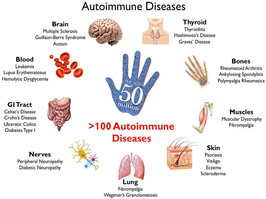
- Track 7-1The Diverse Array of Autoimmune Diseases
- Track 7-2Cancer
- Track 7-3Celiac disease
- Track 7-4Clinical Trials
- Track 7-5Translational Research
- Track 7-6 Multiple sclerosis
- Track 7-7Lupus
- Track 7-8Rheumatoid arthritis
H5N1 infection in humans can cause severe disease and has a high mortality rate. It is the most common form of bird flu Influenza that is distributed thought the world. It has caused symptomatic and asymptomatic infections in many vertebrate species, including a large variety of birds such as ducks, geese, terns, chickens, quail, turkeys, pheasants, starlings and budgerigars, as well as in gibbons, baboons, chimpanzees and humans. In many cases, bird flu in humans grows into a serious disease that should be treated on time in the hospital and may require intensive care. People who work with poultry farming are suggested to follow biosecurity and infection control practices. They include the use of suitable personal protective equipment and careful attention to hygiene. The antiviral medicine oseltamivir can decrease the severity of illness and prevent death. It should be used in all cases.

- Track 8-1Antiviral medicines
- Track 8-2Seasonal influenza
- Track 8-3Pandemic influenza & management
- Track 8-4Avoid Sources of Exposure
- Track 8-5Biosecurity
- Track 8-6Infection control practices
Interactions among nutrition, infections, and immune disorders have significant implications for individual, public, and economic health around the world. Infection and immunity both provide new perceptions into the connections between fungal, bacterial, parasitic pathogens, and their hosts. There are a various numbers of areas of interest related to this topic which include mechanism of molecular pathogenesis, cellular microbiology, virulence factors, host resistance etc.
- Track 9-1Cellular microbiology
- Track 9-2Virulence factors
- Track 9-3Host resistance
- Track 9-4Molecular pathogenesis
The symptoms of an infection depend on the organism responsible and the site of the infection. Viruses target specific cells, such as those in the upper respiratory tract or genitals. For example, the rabies virus, targets the nervous system. Some viruses target skin cells, causing warts. Others target a wider range of cells, leading to various symptoms. A flu virus can cause a running nose, allergic reactions, muscle aches, and an upset stomach. The cause of an infection is said to be any type of organism that has invaded the body. A particular virus, for example, will be the cause of a viral infection. There can be numerous causes for an infection.
- Track 10-1Fever
- Track 10-2Diarrhoea
- Track 10-3Fatigue
- Track 10-4Muscle aches
- Track 10-5Cough
- Track 10-6Running nose
- Track 10-7Allergies
The feasibility of disease control is hampered potentially by vast number of emerging and re-emerging pathogens, the diversity of geographic sources, the potential for rapid global dissemination from these sources, and numerous ecologic and social factors influencing emergence.
A disease is an emerging disease only when it is completely a new infection or it has recently increased in impact and severity and affected newer locations across the globe. Re-Emerging diseases are the ones who were known as major health problems at one time, but had declined and now are again becoming health problems for the people.
- Track 11-1Helicobacter pylori
- Track 11-2Staphylococcus aureus
- Track 11-3H5N1 Influenza
- Track 11-4Streptococcus, group A
- Track 11-5Prion diseases
- Track 11-6Enterovirus 71
- Track 11-7Coccidioides immitis
- Track 11-8Hepatitis E
- Track 11-9Hepatitis C
- Track 11-10Hendra virus
- Track 11-11Acanthamebiasis
- Track 11-12Enterocytozoon bieneusi
- Track 11-13Encephalitozoon hellem
- Track 11-14Encephalitozoon cuniculi
- Track 11-15Ehrlichiosis
- Track 11-16Coronaviruses, including SARS coronavirus
- Track 11-17Bartonella henselae
- Track 11-18Babesia, atypical
- Track 11-19Australian bat lyssavirus
Zika is a single-stranded RNA flavivirus, a member of the Flaviviridae family. The virus is genetically linked to some others responsible for encephalitis in humans, including chikungunya, dengue, West Nile, and the yellow fever virus. It is one of the arboviruses transmitted by Aedes mosquitoes. The main vectors are Aedes aegypti and Aedes albopictus. It causes severe haemorrhagic fever with high mortality rates in humans. As the virus spreads through the body, it damages the immune system and organs. Eventually, it causes levels of blood-clotting cells to drop. This leads to severe, uncontrollable bleeding.

- Track 12-1Therapeutic Strategies
- Track 12-2Clinical Manifestation
- Track 12-3Vaccine Developments
- Track 12-4Challenges of Treatment of Zika Virus
The recent outbreak of Ebola virus disease in both developing and developed countries reminded us the great threat of emerging infectious diseases. Ebola viruses are highly communicable once early symptoms develop. The infected patients shed infectious viruses in all body secretions or fluids. If any individual comes in direct contact with any of these secretions it may cause virus transmission to them. The infection spreads by direct contact with blood and secretions, or the ones that remain on clothing, and by any equipments used to treat patients. There’s no cure for Ebola till date. Drugs like ZMapp and TKM-Ebola are being used for treatment. Specialists prescribe medicines such as acetaminophen (Tylenol) to reduce fever and pain. Treatment includes an experimental serum that destroys the infected cells.
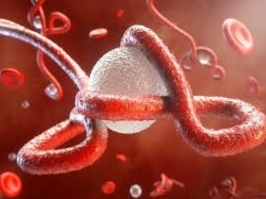
- Track 13-1Acetaminophen
- Track 13-2ZMapp and TKM-Ebola
- Track 13-3Epidemiology of Ebola Virus
Children are more susceptible to environmental risks than adults because of a number of reasons. Children are constantly growing and so and they eat more food, drink more water, and breathe more air as compared to adults. They have increased vulnerability to illness. These contagious diseases are mostly caused by microscopic organisms, infections and parasites. A widespread variety of immunologic illnesses are caused by micro-organisms, infections, pathogens, bacteria and parasites. Paediatric specialists may understand the symptoms, signs, causes, side effects, medicines, and results related with infectious diseases in children.
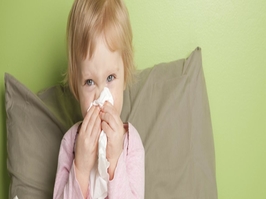
- Track 14-1Impetigo (school sores)
- Track 14-2Whooping Cough
- Track 14-3Scarlet Fever
- Track 14-4Scabies
- Track 14-5Mumps
- Track 14-6Molluscum Contagiosum
- Track 14-7Meningococcal Disease
- Track 14-8Measles
- Track 14-9Influenza
- Track 14-10Chicken Pox
- Track 14-11Hepatitis A
- Track 14-12Head Lice
- Track 14-13Hand Foot and Mouth Disease
- Track 14-14Glandular Fever
- Track 14-15German Measles (Rubella)
- Track 14-16Gastroenteritis
- Track 14-17Conjunctivitis
During a normal day, a person usually breathes nearly 25,000 times. The term respiratory disease refers to many disorders affecting the lungs, such as asthma, COPD, infections like influenza, pneumonia and tuberculosis, lung cancer and many other breathing problems. Some lung diseases can lead to respiratory failure out which a few are contagious and rest are not. The features of different respiratory tract infections largely depend on the structures where inflammation is localised and the extent to which function is altered.
Therefore, infection of the nasopharynx, results in a nasal discharge, bronchitis in cough and sputum production, and pneumonia in cough and sputum, but also in increased respiratory rate and chest radiograph changes. Most upper respiratory tract infections are caused by viruses and are self-limiting.
- Track 15-1Influenza
- Track 15-2Pharyngitis
- Track 15-3Acute sinusitis
- Track 15-4Laryngitis
- Track 15-5Empyema
Sexually Transmitted Disease is a type of infection of the reproductive tract. They are also referred to as sexually transmitted infections, or genital sickness. Endogenous infections and iatrogenic infections are the other types of reproductive tract infections. Endogenous infections are usually caused due to overgrowth of organisms that are normally present in the genital tract. One example of an endogenous infection is bacterial vaginosis. Other genital diseases include syphilis, herpes simplex virus (HSV), chancroid, lymphogranuloma venereum (LGV), human papillomavirus infection (HPV), and Chlamydia/gonorrhea. Viral STDs cannot currently be cured, but treatment can relieve some of their symptoms and reduce the severity of some of their consequences.
- Track 16-1Endogenous infections
- Track 16-2Latrogenic infections
- Track 16-3Bacterial vaginosis
- Track 16-4Syphilis
- Track 16-5Chancroid
- Track 16-6Herpes simplex virus (HSV)
- Track 16-7Lymphogranuloma venereum (LGV)
- Track 16-8Human papillomavirus infection (HPV)
- Track 16-9Chlamydia/gonorrhoea
- Track 16-10Trichomoniasis
- Track 16-11Human Immunodeficiency Virus (HIV)
- Track 16-12Genital Herpes
The epidemiology of infectious or contagious diseases involves study of the prevalence, incidence and factors of infections in populations. They remain to be one of the most important causes of morbidity and mortality across the globe.
- Track 17-1Epidemiology of emerging and re-emerging infections
- Track 17-2Development of vaccines and other prevention methods
- Track 17-3Clinical trials
- Track 17-4Role of infectious pathogens in the pathogenesis
Many pathogens and pathogenic agents are transmitted via blood, causing infection. Infusion of blood or its components into the body, or blood transfusion, imports a much greater amount of infectious agents into blood vessels compared to an accidental needle prick. Infectious agents which are transmitted by blood include hepatitis viruses, syphilitic spirochete, and retroviruses such as adult T cell leukaemia viruses and AIDS viruses.
- Track 18-1Dengue Fever
- Track 18-2Human Immunodeficiency Virus (HIV)
- Track 18-3Hepatitis A, B, and C
- Track 18-4Methicillin-resistant staphylococcus aureus (MRSA)
Viral hepatitis is a global public health problem affecting millions of people every year, all around the world causing disability and death. Reasonable measures, such as vaccination, safe injections, safe food, and safe blood supply can decrease the rate of transmission of viral hepatitis. Many of these measures not only reduce the transmission of viral hepatitis but also have spill over effects on the prevention of various other contagious diseases. Furthermore, current therapies for hepatitis B and C give health care providers effective tools to combat the disease. New advanced therapies are also being developed for hepatitis B and C, and the future is more promising than ever. Antiretrovirals such as TDF, 3TC, & FTC are effective for treatment of both HIV and HBV infections. The co-infected patients can take fewer drugs to treat these two diseases. Viral hepatitis can also be prevented by taking vaccines on time and maintaining proper hygiene.
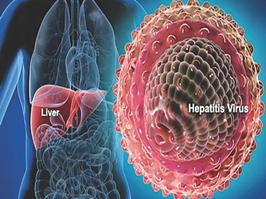
- Track 19-1Screening test
- Track 19-2Antiretroviral drugs
- Track 19-3Safe injection practices
- Track 19-4Blood safety strategies
- Track 19-5Evaluation and Management of chronically-infected persons
- Track 19-6Personal & Community Hygiene
- Track 19-7Antiviral Drugs like lamivudine,& Adefovir
- Track 19-8Pegylated interferon Injections
There is famous saying " A man's weakness is not achieving victories, but in taking advantage of them." This is a fact in the case for global infection control or global eradication of diseases. The most common debate among public health practitioners is how existing health technologies can be used to decrease infectious disease incidence and prevalence. Till date only one disease, smallpox, has been eradicated by vaccines, saving almost 5 million lives yearly. Regular application of personal and community hygiene, sanitation, environmental modification, vaccines and vector control have led, in many countries, to the interruption of transmission of microbes causing such diseases as cholera, yellow fever and malaria. We can hope that advancements in technology may someday hep in eradicating infectious diseases globally.
In spite of noteworthy advancements in the treatment of infectious diseases, central nervous system (CNS) infections still remain a major challenge. They are often difficult to diagnose, and treatments are insufficient or non-existent. Infections can be categorised as acute or chronic. Infection of the nervous system may comprise of meninges (meningitis) or the brain substance itself (encephalitis), or both of them (meningoencephalitis). Some infections trigger an inflammatory reaction that causes neurological damage independently or coincide with the infection. In some inflammatory conditions, new issues may arise which might be related to the disease. These differences are of fundamental importance, as management and outcomes can be impacted by timely initiation of therapy .
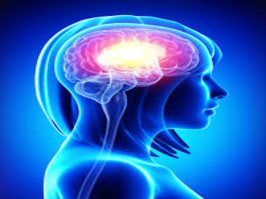
- Track 21-1Toscana Virus Infection
- Track 21-2Meningitis
- Track 21-3Encephalitis
- Track 21-4Multifocal Leukoencephalopathy
- Track 21-5Neurosarcoidosis
- Track 21-6Transverse myelitis
- Track 21-7Hydrocephaly
- Track 21-8Parameningeal
MRSA is presently a pathogen of global health concern.They are S. aureus strains that are resistant to oxacillin, nafcillin and methicillin. They can also be resistant to all ß-lactam agents. It can cause a variety of problems ranging from skin infections and sepsis to pneumonia and various types of bloodstream infections. The infections occur commonly among people in hospitals and healthcare facilities such as nursing homes, diagnostic centres and dialysis centres, who have less stable immune systems. The current arsenal of antibiotics available for the treatment of MRSA includes a topical agent, a limited number of oral agents.

- Track 22-1Community-acquired MRSA (CA-MRSA)
- Track 22-2Healthcare-associated MRSA (HA-MRSA)
- Track 22-3Virulence Associated Factors of CA-MRSA
- Track 22-4Antibiotic resistance
- Track 22-5Recurrent MRSA Infections
- Track 22-6Oral and intravenous agents
- Track 22-7Topical agents
- Track 22-8Vancomycin, Clindamycin and linezolid
- Track 22-9Pneumonia (HAP/VAP)
- Track 22-10Chronic osteomyelitis (COM)
- Track 22-11Skin and soft tissue infections
A severe pandemic could kill millions and costs trillions of dollars Pandemic refers to an infectious disease that spreads globally and causes mortality on a significant scale. A disease is considered epidemic when the number of cases rises above what would normally be expected in a given area. Epidemics have posed a perpetual threat to human health throughout history. In spite of remarkable advances in infectious disease prevention, control and treatment, epidemics still continue to threaten populations as new diseases emerge and some old ones return. While most epidemics involve an infectious cause, changing behavior patterns have led to epidemic levels of some chronic diseases. There have been innumerable outbreaks of serious infectious diseases across the globe. It is expected that a few diseases might cause severe epidemics. They include Ebola, Crimean-Congo haemorrhagic fever, Lassa fever, Rift Valley fever, Chikungunya, Zika, Marburg, and SARS.
- Track 23-1Common source outbreak
- Track 23-2Propagated outbreak
- Track 23-3Asian flu
- Track 23-4Swine Flu
- Track 23-5Lassa fever
- Track 23-6Rift Valley fever
- Track 23-7SARS
- Track 23-8Crimean-Congo haemorrhagic fever
- Track 23-9Live, attenuated vaccines
Vaccination has made a huge contribution towards global health. It is a highly effective method of preventing certain infectious diseases. Vaccines are generally very safe, and severe or adverse reactions are uncommon. Vaccines are of many types and they help to develop immunity by imitating an infection. Two major infections, smallpox and rinderpest, have been eradicated with the help of these vaccines but diseases like Viral hepatitis, influenza, and tuberculosis (TB) remain among the leading causes of illness and death thought the world. The diseases for which vaccines are available are Measles, Rubella, Cholera, Meningococcal disease, Poliomyelitis, Varicella and herpes zoster (shingles).
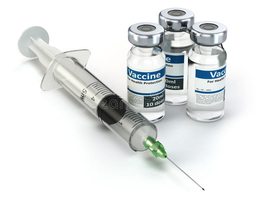
- Track 24-1Inactivated vaccines
- Track 24-2Toxoid vaccines
- Track 24-3Conjugate vaccines
- Track 24-4Subunit vaccines
Infectious and parasitic disease control is important in veterinary clinics. The main aim is to prevent the spread of infections and infestations. Veterinary infectious diseases are caused by bacteria, fungi, viruses, and parasites. These infections and diseases may be spread or transmitted from human to human, human to animal, and animal to human.

Rheumatic heart disease is a complication of rheumatic fever in which the heart valves are damaged. Rheumatic fever is an inflammatory disease that arises with strep throat. It harms the connective tissues throughout the body, mainly in the heart, joints, brain and skin. The best way to prevent rheumatic fever is to treat strep throat with antibiotics. Treatment of this disease includes antibiotics treatment for strep infection and additional medications to ease the inflammation of the heart and other symptoms. Aspirin is usually given in large doses until the joint inflammation goes away. Once the acute illness has gone away, patients need to take antibiotics, for many years to prevent recurrences. This is a very important treatment because the risk of heart valve damage increases if rheumatic fever recurs.
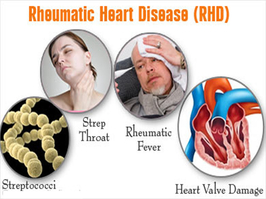
- Track 26-1Diagnosis
- Track 26-2Echocardiography
- Track 26-3Prevention using antibiotic therapy
- Track 26-4Surgical repair or replacement of a damaged heart valve
- Track 26-5Genetic susceptibility
Infectious diseases account for nearly one fifth of the worldwide death toll every year. The constant increase of drugâ€resistant pathogens is a big challenge for treatment of infectious diseases. In addition, outbreaks of infections and new pathogens are potential threats to public health. Lack of effective treatments for drugâ€resistant bacteria and recent outbreaks of Ebola and Zika viral infections have become a global public health concern. The number of newly approved antibiotics has decreased significantly in the last two decades compared with previous decades. In parallel with this, is an increase in the number of drugâ€resistant bacteria. For these threats and challenges to be countered, new strategies and technology platforms are critically needed. Drug remodelling has emerged as an approach for rapid identification of effective therapeutics to treat the infectious diseases.

- Track 27-1Antimicrobial resistance
- Track 27-2Applications to exploit actinomycetes as a resource for new antibiotics
- Track 27-3Antimicrobials by immune stimulation
- Track 27-4Molecular and functional genomic approaches to novel antibacterial target discovery
- Track 27-5Improved microbial identification
